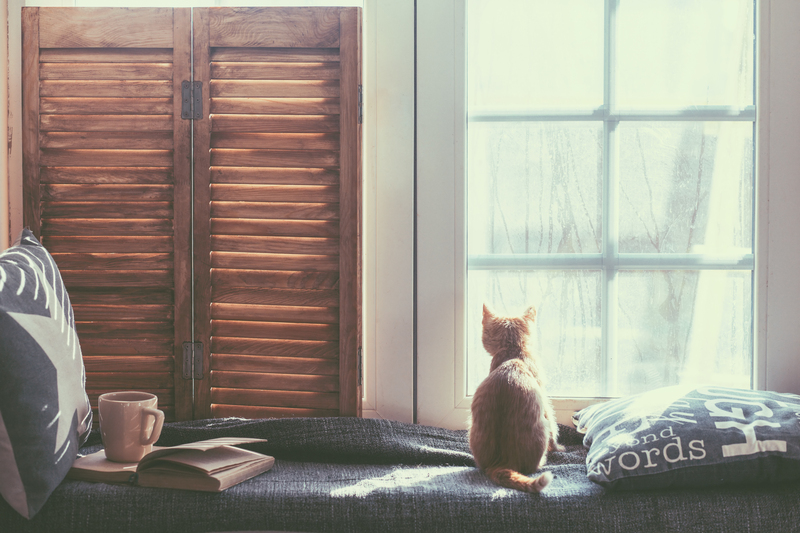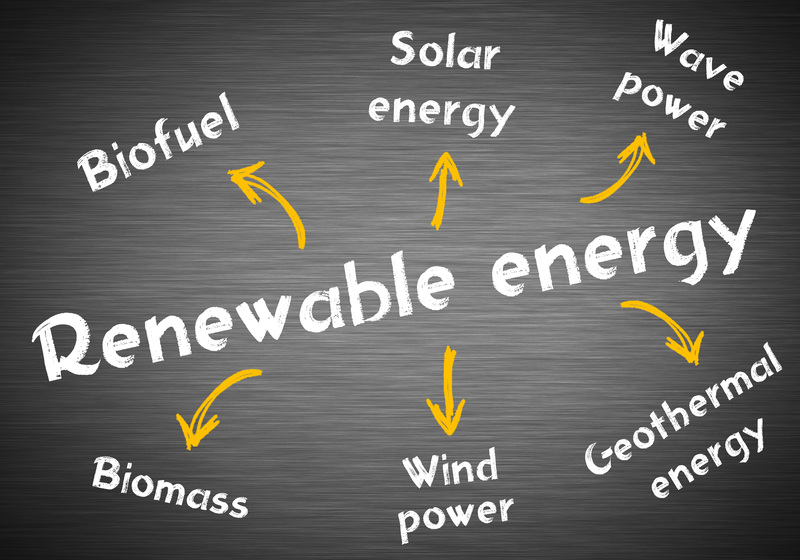Refresh Your Environment: Minimalist Living Through Decluttering
In today's fast-paced world, our homes can quickly become overwhelmed with possessions, both needed and unnecessary. *Decluttering* and embracing minimalist living are more than buzzwords--they are lifestyle choices that empower us to create tranquil, organized, and purposeful spaces. By clearing clutter, you'll not only revive your environment but also enjoy psychological and practical benefits that enrich daily life. Whether you are new to minimalism or seeking guidance on how to declutter efficiently, this comprehensive guide will set you on the path to a more intentional and fulfilling living experience.
Understanding Minimalist Living
Minimalist living focuses on intentionality--making conscious decisions about what you own and how it aligns with your values. It means prioritizing essentials, reducing distractions, and ultimately enhancing the quality of your life. Often, people envision minimalism as stark, empty spaces. However, genuine minimalism is less about deprivation and more about curating an environment that resonates with your needs and aspirations.
- Simplicity: Maintaining only what serves a purpose or brings joy.
- Functionality: Ensuring every item in your living space has intent and use.
- Harmony: Creating a calm, balanced atmosphere free from excess noise and mess.

The Transformative Power of Decluttering
Decluttering isn't just about tidying up; it's a transformative act that positively impacts mind, body, and environment. Here's why living minimally through decluttering is so powerful:
1. Reduces Stress and Anxiety
Cluttered environments can increase cortisol levels, making you feel overwhelmed. Tidying up creates calm, helping to refresh your environment and soothe your mind.
2. Enhances Productivity and Focus
An organized space helps you concentrate, eliminates distractions, and boosts your creativity. Minimalist decluttering clears physical and mental space for the things that truly matter.
3. Supports Mindful Living
Living with less encourages mindfulness. You begin appreciating the value of each item and experience, fostering a deep sense of gratitude and intentionality.
4. Saves Time and Money
Fewer possessions mean less time spent cleaning, organizing, and searching for lost items. It also curbs unnecessary spending by focusing only on items that add value.
5. Contributes to Sustainability
Minimalist living and decluttering reduce waste and ecological impact. By buying less and keeping only essentials, you support a more sustainable lifestyle.
How to Start Decluttering for Minimalist Living
Step 1: Set Clear Intentions
Begin your minimalist journey by assessing why you want to declutter. Do you crave more space? Is stress from chaos affecting your wellbeing? Clarify your motivations so your efforts remain focused and meaningful.
- Write down your decluttering goals.
- Visualize your ideal minimalist environment.
- Share your intentions with family for support and accountability.
Step 2: Start Small
Facing an entire house can be daunting. Ease into decluttering by tackling one area or category at a time.
- Choose a small project like a drawer, a shelf, or a kitchen counter.
- Commit to a few minutes of decluttering each day to build momentum.
- Celebrate your progress for ongoing motivation.
Step 3: Categorize and Evaluate
Sort belongings into keep, donate, sell, and discard piles. When evaluating, ask yourself:
- Have I used this item in the last year?
- Does it serve a clear purpose or bring joy?
- Am I keeping it "just in case" without reason?
Step 4: Eliminate the Excess
Be firm and honest. Removing unused, unneeded items is the core of minimizing. Donate gently used objects, sell valuables, and responsibly recycle or dispose of the remainder.
- Donation: Local charities, shelters, and thrift stores are excellent options.
- Resale: Online marketplaces and yard sales can convert clutter into cash.
- Disposal: Properly recycle electronics, hazardous waste, and items unsuitable for reuse.
Step 5: Organize What Remains
Once you pare down, organize your essentials effectively. Use storage solutions that keep your environment tidy and items easily accessible, reinforcing minimalist habits.
- Use clear bins and labels for clarity and ease.
- Store like items together to simplify use and increase efficiency.
- Leave space between items for a light, airy effect.
Effective Decluttering Strategies for a Minimalist Lifestyle
The KonMari Method
Made popular by Marie Kondo, this strategy focuses on keeping items that *spark joy.* Tackle items by category--not by room. Hold each item and ask if it serves your life. If not, thank it and let it go.
Minimalist Packing Party
Place all your possessions into boxes as if you were moving. Only unpack things as you need them. After 30 days, donate or dispose of what remains in boxes.
The Four-Box Method
In each decluttering session, assign items to four boxes: keep, donate, store, trash. This clear separation prevents indecision and ensures consistent progress.
One In, One Out Rule
Every time you bring a new item into your home, remove an existing one. This practice automatically curbs future accumulation and supports a minimalist space long-term.
Navigating Emotional Attachments During Decluttering
Many people struggle to let go of possessions due to sentimentality or guilt. Here are some tips for handling emotional ties while pursuing minimalist living:
- Preserve Memories Digitally: Scan photos or memorabilia you can't keep physically to retain the sentiments without the space.
- Honor, Then Release: Acknowledge the role an item played before letting it go. This act brings closure and respect to your decision.
- Gift with Intention: Pass items on to others who will cherish or use them, extending their value and meaning.
Minimalist Decluttering--Room-by-Room
Kitchen
- Remove duplicate gadgets and expired foods.
- Keep countertops clear except for daily essentials.
- Organize pantry staples in clear containers for visibility.
Living Room
- Limit decor to a few meaningful pieces.
- Use multifunctional furniture with storage.
- Minimize books, DVDs, and display items to what you actively use or enjoy.
Bedroom
- Donate unworn clothing and outdated accessories.
- Keep surfaces clear--nightstands and dressers should only hold essentials.
- Opt for under-bed storage for seasonal items.
Bathroom
- Dispose of expired cosmetics, medications, and toiletries.
- Keep counters clear; use baskets or drawers for supplies.
- Limit linens to a few quality sets.
Maintaining Your Minimalist, Clutter-Free Environment
Achieving a refreshed, minimalist environment through decluttering is a significant step--but maintaining it is an ongoing process. Here's how to preserve your peaceful space:
- Daily Resets: Set aside a few moments each day to put items away and spot-tidy.
- Seasonal Reviews: Regularly assess belongings with the changing seasons--what's no longer needed, used, or appreciated?
- Mindful Purchases: Before buying, ask yourself if the item aligns with your minimalist goals and if it has a clear purpose.
Common Myths About Minimalist Living and Decluttering
-
Myth: Minimalism means living in empty rooms.
Reality: Minimalist interiors are personal, comfortable, and filled with intentional pieces--never cold or sterile. -
Myth: Decluttering requires getting rid of everything.
Reality: It's about keeping what serves you, not about austerity for its own sake. -
Myth: Only "neat freaks" can live minimally.
Reality: Anyone can adopt minimalist practices that fit their unique lifestyle and preferences.
Decluttering and Minimalism for Households and Families
Adopting minimalist living as a family may seem challenging, but it offers immense benefits for all ages:
- Collaborative Decluttering: Involve everyone in deciding what to keep or release, teaching valuable lessons about intentionality and gratitude.
- Shared Experiences: Use the time to bond and create shared goals for your environment.
- Designated Zones: Give every item a "home" so family members know where things belong, simplifying routines.

Minimalist Living and Decluttering Beyond the Home
The principles of decluttering and minimalist living extend well beyond your physical environment. Here's how you can apply the same philosophy to other aspects of life:
- Digital Declutter: Unsubscribe from unwanted emails, organize files, and reduce digital noise for a cleaner mental space.
- Prioritize Commitments: Learn to say "no" to unnecessary obligations, reserving your time for what truly matters.
- Mindful Consumption: Rethink your buying habits. Choose quality over quantity, and support ethical brands.
Conclusion: Embrace Minimalism, Refresh Your Life
By refreshing your environment through minimalist decluttering, you'll open the door to a more peaceful, focused, and fulfilling way of living. Minimalist living invites you to value quality and intention over quantity, giving you more room for what matters--both physically and mentally. Start small, stay consistent, and remember: your environment is a reflection of your inner world. As you clear the clutter, you'll find yourself feeling lighter, freer, and more inspired every day.
If you're ready to embrace minimalist living and transform your environment, the journey begins with a single action--one drawer, shelf, or room at a time. Take that first step, and experience the lasting clarity and joy that minimalist decluttering can bring.
Refresh your environment today, and discover the true freedom that comes with living simply and intentionally.